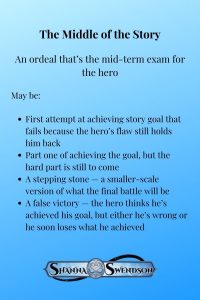Books
Cozy Fantasy
I’ve mentioned wishing for the fantasy equivalent of the cozy mystery, but I’m not sure exactly what that would look like. A “cozy mystery” is a defined subgenre with certain expectations. Usually, the gore and violence are offstage and not vividly described. Most often, it’s written in first-person and is entirely within the perspective of the (usually amateur) sleuth, so we don’t see the crime being committed and readers get to solve the case along with the sleuth. There’s some conflict and tension, since there has been a crime, usually a murder, and quite often there’s some jeopardy for the sleuth near the resolution, but the overall tone is light, not delving into the darker aspects of human nature. Even if the story doesn’t actually take place in a small town, it usually involves a somewhat closed community that functions like a small town, like a neighborhood in a big city, so that there are community members who serve as regular characters, and most of these characters are fairly likable. We might want to live in this community, in spite of the frequent murders. These are comforting, satisfying reads that leave you with the sense that justice has been done and all is right in the world.
So, what would the fantasy equivalent be? The short, quippy answer would be “the opposite of grimdark.” In other words, little violence, and whatever violence not vividly described. The subject matter wouldn’t be dark, so we aren’t worrying about the evil overlord raising a demon zombie army that will drag the world into the pits of hell. The main characters wouldn’t get tortured, either physically or psychologically. These aren’t “main character gets put through hell” stories. Probably likable characters, and it’s a magical world we’d want to visit. And, like the cozy mystery, it should leave you with a sense that all is well.
I’ve seen more discussion about the idea of cozy fantasy lately, and I recently read a book that’s coming up a lot in this discussion, Legends and Lattes, by Travis Baldree. The tag line for it is “a novel of high fantasy and low stakes.” It’s about an orc mercenary who’s retiring from being a sword for hire and using her savings to open a coffee shop. There is some conflict and danger from the local crime boss running a protection scheme and from a former colleague who’s sure she’s running some angle and wants whatever she’s got, but for the most part, the story’s about her gathering a team of people that become the community around the shop. I would call the stakes personal rather than low because to this character, making this coffee shop succeed is everything. If she fails or loses it, she loses everything. It’s just not a problem for the world as a whole. The people in her community would miss it if she lost it, though they might not actually be harmed.
It was definitely a read that gave me a “cozy” vibe. I don’t even like coffee and I found myself wanting to hang out in this shop. And now I want someone to open a fantasy-themed coffee/tea shop, something that feels like a tavern from a fantasy story, but with the focus on caffeine and baked goods instead of alcohol.
I’ve been trying to think of other examples that might fit. I’d probably put the Narnia books in this category. It’s a world I’d like to visit. There’s conflict, but I don’t think it’s overly dark or violent. You end up feeling like there’s been justice done and everything working out. Some of that comes from them being written for kids, but they still give me cozy vibes.
I think it might be difficult to sell a cozy fantasy to a major publisher these days. All the examples I can think of offhand were independently published or from a small press. The big publishers want lots of intensity and conflict. Think of the worst thing that could happen to your character and do it to them. The stakes must be high.
I don’t know if the book I’m working on now would count as cozy. There are cozy elements and I think a bit of a cozy vibe, but the stakes are more than personal. If things don’t work out, it could have worldwide implications. Not demons dragging the world into the pits of hell implications, but an evil power getting a bigger foothold. Still, it’s about needing to pull together and remember who we are so we can stand up against the evil power. And the evil is just greedy and power-hungry, not Ultimate Evil Sauron-type stuff. The earlier Enchanted, Inc. books are probably cozy fantasy, since I was unwittingly essentially writing cozy mysteries, but with magical skullduggery instead of murders. I think they got published because they were classified as chick lit at the time, which wasn’t focused on high-stakes conflict the way fantasy tends to be. I’m not sure a fantasy publisher would have been interested.
There’s a forum on Reddit about cozy fantasy that I’ll have to dig into and see what people are talking about. I can always use more book recommendations. Maybe I’ll even actually join Reddit and participate in the discussion.

